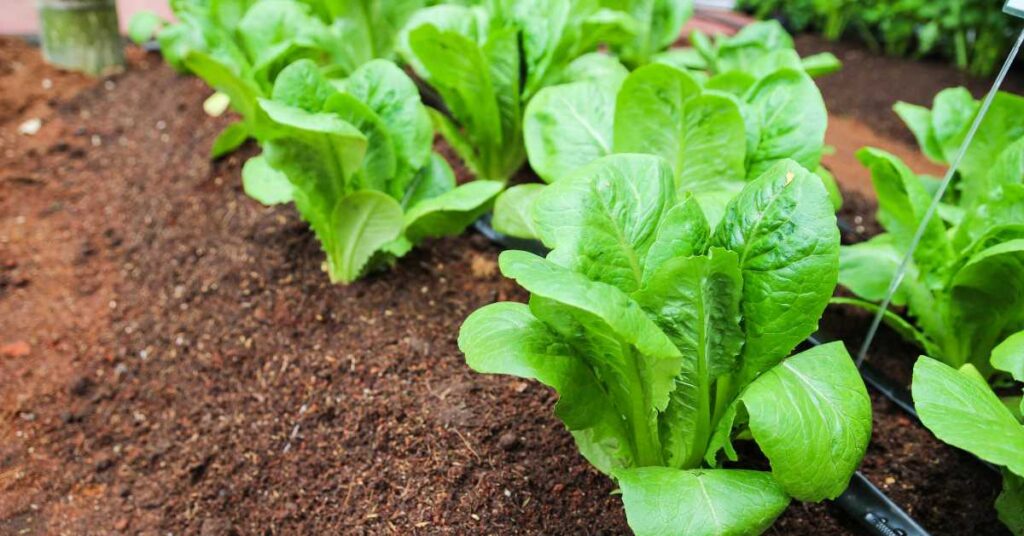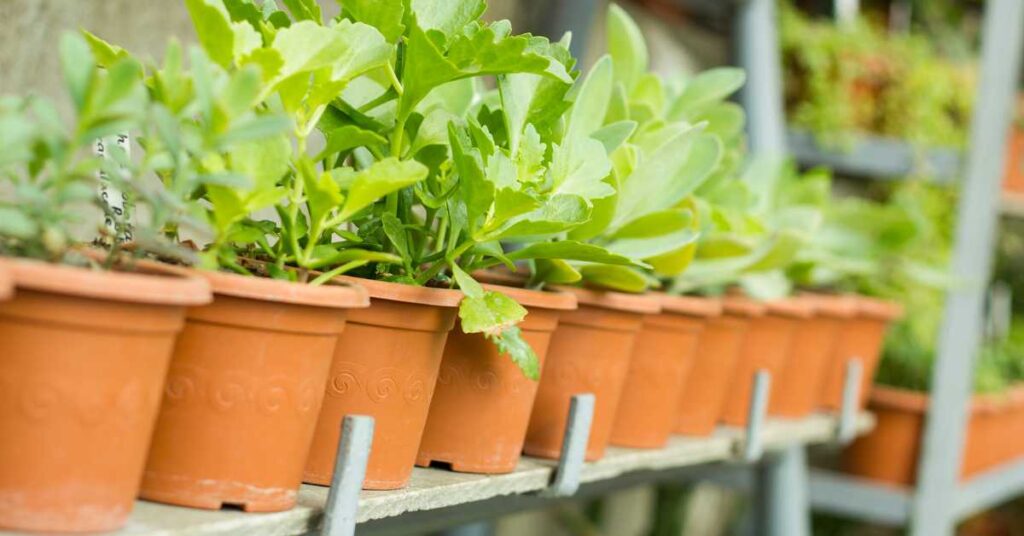Can you homestead anywhere? Yes, you can homestead anywhere. Homesteading is more of a lifestyle than living in a particular place or location. Homesteading is about living a simpler lifestyle with a focus on getting back to your roots, and doing more for yourself than depending on others. No matter where you are in your life you can live a homestead life. You can grow a garden and preserve food even if you are living in a residential neighborhood with a small yard.
Imagine your life as a patchwork quilt, with each piece representing a different aspect of your existence. In this quilt, the idea of homesteading is like a vibrant thread, weaving its way through every square. It symbolizes self-sufficiency, simplicity, and a connection to the land. But can you homestead anywhere? Can you embrace this lifestyle no matter where you find yourself?
In this article, we will explore the possibilities of homesteading in various settings, from urban jungles to suburban neighborhoods, and even in the vast expanse of rural landscapes. So, grab a cup of tea, settle in, and let’s embark on a journey of discovery. Welcome to the world of homesteading, where belonging is found in every corner of the Earth.
Key Takeaways
- Homesteading can be embraced in any location, from urban settings to rural areas.
- Homesteading requires understanding the land, adapting, and making the most of what you have.
- Urban homesteading is possible through techniques like vertical gardening, container gardening, and rooftop gardening.
- Rural homesteading provides freedom and self-sufficiency in spacious countryside locations.
Understanding the Homesteading Lifestyle
You can’t fully understand the homesteading lifestyle without embracing the fundamental principles of self-sufficiency and sustainability.
Homesteading is all about assessing your resources and making the most of what you have. It’s about finding ways to be self-reliant and reducing your dependence on outside sources. This means growing your own food, raising livestock, and generating your own energy.
It’s about maintaining sustainability by using renewable resources and minimizing waste. Homesteading requires a deep understanding of the land and its capabilities, as well as the ability to adapt and make the most of what you have.
It’s a lifestyle that values simplicity and resilience, and it requires dedication and hard work. But the rewards are plentiful, as you’ll find a sense of purpose, connection to the earth, and a strong community of like-minded individuals who share your desire for belonging.

Assessing Your Current Environment
Nestled within the embrace of the present, you can explore the boundless potential for homesteading. Evaluating the feasibility of homesteading in your current environment is crucial.
Consider the resources available to you, such as land, water, and climate. Assess whether your location allows for sustainable agriculture and self-sufficiency. Look for alternative options if your current environment doesn’t meet your homesteading needs. Research nearby areas that may offer better opportunities for homesteading, such as rural communities or agricultural regions.
Additionally, think about the local regulations and zoning laws that may affect your homesteading plans. Some areas may have restrictions or require permits for certain activities, like keeping livestock or building structures.
By carefully evaluating your current environment and considering alternative options, you can find the perfect place to embark on your homesteading journey.
Homesteading in Urban Settings
Imagine transforming your urban environment into a thriving homestead, where you can cultivate your own food and live sustainably.
Urban homesteading is not only possible, but it’s also becoming increasingly popular. With limited space, urban gardening techniques like vertical gardening, container gardening, and rooftop gardening allow you to grow a wide variety of fruits, vegetables, and herbs right in your own backyard or balcony.
Utilizing composting systems and rainwater harvesting, you can create a closed-loop system that reduces waste and conserves resources.
Additionally, urban homesteading isn’t just about gardening; it also includes skills like canning, preserving, and raising small livestock like chickens or bees.
By embracing urban homesteading, you can create a sense of belonging in your community, connect with nature, and live a more self-sufficient and sustainable lifestyle.

Homesteading in Suburban Areas
With limited space in suburban areas, it’s possible to create a self-sustainable homestead by implementing techniques like square foot gardening and backyard chicken coops.
Suburban homesteading presents unique challenges but also offers many benefits. One of the main challenges is the limited space available for gardening and animal husbandry. However, by utilizing square foot gardening, you can maximize the use of space and grow a variety of vegetables and herbs in small raised beds.
Additionally, backyard chicken coops are a great way to produce your own eggs and even meat in a suburban setting.
The benefits of urban homesteading in suburban areas include access to amenities and services, such as grocery stores and schools, while still enjoying the satisfaction of growing your own food and reducing your ecological footprint.
By embracing suburban homesteading, you can create a sense of belonging and contribute to a more sustainable lifestyle.
Homesteading in Rural Locations
If you’re ready to embrace the freedom and self-sufficiency of rural living, there’s no better place than a spacious homestead in the countryside. However, if rural living isn’t your cup of tea, you might be wondering if you can homestead in other locations. The answer is yes!
While most homesteaders choose rural areas, it is possible to homestead in unconventional locations like high-rise buildings or even houseboats. Homesteading in high-rise buildings can be a unique experience. You can create a small garden on your balcony or even utilize vertical gardening techniques. Additionally, you can raise small animals like chickens or rabbits using innovative coop designs.
Homesteading on a houseboat also offers a different kind of lifestyle. With limited space, you’ll need to be creative with your gardening strategies. Container gardening and hydroponics can be great options. You can also consider aquaponics to grow fish and plants together, making the most of your space.
No matter where you choose to homestead, the key is to adapt your practices to fit your location and maximize your self-sufficiency.
Overcoming Space Limitations
Embrace the challenge of space limitations and discover creative ways to maximize your self-sufficiency in unconventional homesteading locations.
When homesteading in areas with limited space, container gardening becomes your best friend. With this method, you can grow a wide variety of plants, from herbs to vegetables, in pots or containers.
Utilizing vertical farming techniques is also essential in making the most of your limited space. Vertical gardens allow you to grow plants upwards, utilizing walls or structures to create a vertical growing space. You can use trellises, hanging baskets, or even repurpose old pallets to create a vertical garden.
By thinking outside the box and utilizing these space-saving techniques, you can create a thriving homestead no matter the size of your land.
Exploring Container Gardening Options
If you’re limited on space but still want to homestead, don’t worry! There are plenty of options available to you, like container gardening. This method allows you to grow plants in containers, such as pots or buckets, making it perfect for those with limited yard space or even just a balcony.
Container gardening offers several benefits that make it an ideal choice for homesteaders. Firstly, it allows for greater flexibility in terms of location, as you can move the containers around to find the best sunlight. Secondly, it helps control the growth of invasive plants, as the containers act as a barrier. And finally, container gardening is easier to maintain and requires less water and fertilizer compared to traditional gardening.
When choosing plants for your container garden, consider their size, sunlight requirements, and water needs. Opt for plants that are well-suited for containers, such as herbs, leafy greens, tomatoes, and peppers. With the right plant selection and some creativity, you can create a thriving container garden that adds beauty and sustenance to your homestead.

Raising Livestock in Limited Spaces
In cramped urban quarters, it’s still possible to have your own little farm by raising livestock in limited spaces. Even if you don’t have a big backyard, you can create a sustainable and self-sufficient homestead by incorporating vertical farming and rooftop gardening techniques.
Vertical farming allows you to maximize your space by growing crops in stacked layers, using techniques such as hydroponics or aeroponics. You can grow a variety of vegetables, herbs, and even fruits in vertical gardens, providing fresh produce for yourself and your livestock.
Additionally, rooftop gardening is a great way to utilize unused space and create a thriving garden. You can grow a range of plants, including medicinal herbs and edible flowers, which can supplement your livestock’s diet and provide them with essential nutrients.
So, even in limited spaces, you can still create a vibrant homestead and enjoy the benefits of raising livestock.
Maximizing Self-Sufficiency in Small Areas
With limited space, it’s possible to create a thriving, self-sufficient oasis by incorporating vertical farming and rooftop gardening techniques.
Small space gardening allows you to grow a wide variety of fruits, vegetables, and herbs in containers, hanging baskets, or on shelves. You can also utilize trellises and walls to grow vining plants like cucumbers and beans, maximizing your growing area.
Another way to maximize self-sufficiency in small areas is by harnessing alternative energy sources. Solar panels can power your homestead, providing electricity for lighting, heating, and powering small appliances. Rainwater harvesting systems can collect and store water for irrigation, reducing your reliance on municipal water supplies.
Composting is a great way to recycle organic waste and create nutrient-rich soil for your garden. Finally, incorporating beekeeping can help with pollination and provide you with honey and beeswax for various uses.
By implementing these strategies, you can create a self-sufficient and sustainable homestead, no matter the size of your space.
Finding Community Support and Resources
Finding community support and resources is absolutely essential for creating a thriving, self-sufficient oasis in small areas. When homesteading in a limited space, it’s crucial to connect with like-minded individuals who share your passion for sustainable living.
Engaging with your community can provide you with valuable knowledge, skills, and support that will contribute to your homesteading success.
One way to foster community engagement is by joining local gardening or homesteading groups. These groups often hold workshops, swap meets, and seed exchanges, providing opportunities to learn from experienced homesteaders and share resources with fellow enthusiasts.
Additionally, attending agricultural fairs and farmers markets can connect you with local farmers and producers who can offer guidance and advice specific to your area.
Sharing resources is another important aspect of community support. You can collaborate with neighbors to create shared gardens or community composting systems. By pooling resources, such as tools, equipment, and surplus produce, you can reduce costs and maximize efficiency.
Remember, building a self-sufficient oasis is not a solitary journey. By actively engaging with your community and sharing resources, you can create a network of support that will help you thrive on your homestead, no matter the size of your space.
Adapting Homesteading Practices to Your Location
When creating your own self-sufficient oasis, it’s crucial to adapt homesteading practices to the unique characteristics of your location. Adapting homesteading techniques and sustainable living practices is essential to ensure success in any environment.
Start by researching the specific climate, soil conditions, and available resources in your area. This knowledge will help you choose appropriate crops and livestock that can thrive in your region. Additionally, consider implementing water conservation methods, such as rainwater harvesting or drip irrigation, to maximize your water usage.
Incorporating renewable energy sources like solar panels or wind turbines can also greatly reduce your reliance on the grid. By adapting your homesteading practices to your location, you will not only increase your chances of success but also contribute to the sustainability of your community and the planet.
Embracing the Spirit of Homesteading
Embracing the spirit of homesteading is like planting seeds of self-sufficiency that bloom into a vibrant and fulfilling lifestyle. While homesteading can be challenging, there are ways to adapt it to various locations, including urban areas.
Here are some tips to help you embrace the spirit of homesteading:
- Start small: Begin with simple projects like growing herbs or keeping a few chickens in your backyard.
- Maximize space: Utilize vertical gardening techniques and explore creative ways to make the most of limited space.
- Build a community: Connect with like-minded individuals through local farmers markets, community gardens, a local Facebook group or online forums to learn from and support each other.
- Embrace sustainability: Incorporate eco-friendly practices into your daily life, such as composting, rainwater harvesting, and reducing waste.
By embracing the spirit of homesteading, you can overcome the challenges and create a fulfilling lifestyle no matter where you live.
Frequently Asked Questions
What are the legal requirements for homesteading in different locations?
The legal requirements for homesteading in different locations vary, but generally include owning or leasing land, meeting building codes, and obtaining necessary permits. Homesteading in rural areas offers benefits such as self-sufficiency, connection to nature, and a sense of community.
How much land do I need to start homesteading?
The amount of land needed to start homesteading can vary depending on your goals and the specific activities you plan to undertake. Homesteading typically involves self-sufficiency, growing your own food, raising livestock, and potentially generating income from your land.
In the United States, the Homestead Act of 1862 granted 160 acres (65 hectares) of public land to settlers who met certain criteria. However, today’s homesteading movement does not necessarily require such a large parcel of land. Many modern homesteaders successfully operate on smaller plots, ranging from a few suburban acres to a few dozen acres in rural areas.
The key is to assess your needs and priorities. Consider factors such as the desired level of self-sufficiency, the types of activities you want to engage in (e.g., gardening, animal husbandry, renewable energy production), and the regulations and zoning laws in your area. Additionally, think about how much time, effort, and resources you are willing and able to invest in your homestead.
Ultimately, the amount of land needed to start homesteading will depend on your specific circumstances and goals.
Are there any restrictions on the types of animals I can raise in an urban setting?
In urban homesteading or urban farming, there are some restrictions on the types of animals you can raise. Check your local zoning regulations and ordinances to see which animals are allowed in an urban setting. Once you have check your local ordinances and restrictions then you can decide on what you type of animals you want to raise.
The next thing you will need to consider is the space requirements of the animals before getting them. In the urban setting, you can typically have a few chickens or ducks, rabbits, or even a small breed of goat like a dwarf Nigerian. The main thing is to make sure you have enough space and food for your animals to be happy and healthy.
Can I still homestead if I have a full-time job in the city?
You can absolutely homestead while working full-time in the city! Balancing city life and homesteading is like juggling two worlds, but with careful planning and dedication, you can create a fulfilling and sustainable lifestyle.
Is it possible to homestead in an apartment or small living space?
Yes, it is possible to practice urban homesteading in an apartment or small living space. There are many benefits to doing so, such as growing your own food, reducing waste, and creating a sense of self-sufficiency and belonging.
You don’t have to live in Alaska or another remote location to homestead, you just have to think outside of the box and use what you have on hand.
Conclusion
So, can you homestead anywhere? Well, my friend, it’s certainly a charming idea, but let’s not get carried away. Homesteading requires more than just a patch of land; it requires a certain mindset and a willingness to put in the hard work.
While it may be possible to adapt homesteading practices to different environments, let’s be realistic here. You can’t exactly turn your tiny apartment balcony into a thriving farm.
So, embrace the spirit of homesteading, but maybe start small and work your way up. Happy homesteading, wherever you may be!




